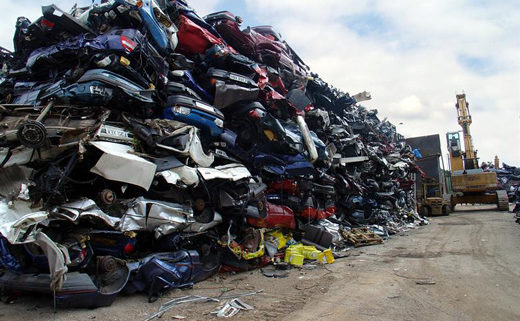Shifting gears: Opportunities in car recycling
Plastic from end-of-life vehicles (ELV) is a largely untapped resource. At the MBA Polymers’ site in Worksop the plant has the capability to process in excess of 50,000mT tonnes of ELV plastic per year, helping to create valuable secondary raw materials for the automotive and consumer goods industries.
In November 2016, MBA’s General Manager, Paul Mayhew, addressed a packed audience of manufacturers and plastics recovery and recycling experts, highlighting the opportunities of recycling more ELV plastics.
Paul began by profiling EMR’s global recycling business, explaining that the company’s work spans 165 sites worldwide and it has invested some $300m in car recycling in the UK and US over the past four years.
He highlighted the scale of the auto recycling challenge, underlining that some 7.8m cars reach end of life annually in Europe. Meanwhile, as the world’s middle classes continue to expand, global car ownership is set to increase from 1bn cars produced in 2010 to some 2.5bn in 2050.
There are clearly millions of tonnes of ELV plastic available. So how do we go about capturing and recycling it? And importantly, how can we create a greater demand for recycled plastics within the automotive industry and beyond?
Introducing MBA Polymers
Paul explained that EMR separates and recycles diverse ASR materials, including metals (ferrous and non-ferrous), recycled plastic (through its joint venture with MBA Polymers) and aggregates. It also creates electricity through a gasification process at its Oldbury plant.
Focusing on the MBA story in particular, Paul charted the company’s history from its founder Mike Biddle’s garage to the opening of plastics processing plants in China, Austria and the UK. Globally, MBA Polymers now processes some 105,000 tonnes of ASR and post-consumer electronic waste annually.
Navigating the technical challenges of recycling ELV plastics
Highlighting the challenges of recycling ELV plastics, Paul pointed to the wide variety of plastic types, customers’ and regulators’ high purity requirements, customers’ high performance requirements. Additionally, he explained that there are residual automotive fluids in plastics, as well as paints, coatings and barrier layers. In some plastics, MBA also finds ‘legacy’ substances of concern (such as heavy metals).
Plastic constitutes some 21% of the total, with the remainder comprising foam and textiles (31%), fine materials (16%), rubber (13%) metal and wires (11%), wood (7%) and other materials (2%).
Recycling ELV plastics: how it works
Firstly, it’s important to separate out the plastic from the rest of the automotive shredder residue (ASR). Among the plastics, there are multiple types. It’s therefore vital to be able to separate and recycle each polymer effectively.
Plastics found in automotive shredder residue
- Polypropylene (PP)
- High density polyethylene (HDPE)
- Acrylonitrile-butadiene-styrene (ABS)
- High impact polystyrene (HIPS) – mostly from other shredded products such as large appliances
- Polyamides (PA6, PA66, PA12)
- Polycarbonate (PC)
- Blends of PC with ABS (PC/ABS)
Next up, Paul covered how MBA separates, processes, extrudes and pelletises its five plastic polymers – PP, HDPE, ABS, HIPS and filled PP plastic – highlighting the innovative technology used at each stage. Importantly, all MBA’s products are RoHS and REACH-compliant, and any residual materials are recovered, sold or incinerated. Nothing goes to landfill.
MBA’s experienced quality control team conducts rigorous laboratory checks of finished products, following processes certified to ISO standards. Paul explained that the company works in partnership with its customers to ensure they achieve the required performance, quality and consistency.
Challenges and opportunities for ELV recycling
Increasingly, Paul told the audience, MBA and EMR are working with carmakers to identify opportunities for recycled plastic to be used in new vehicles. In order for the automotive industry to take full advantage of these opportunities, there are some challenges to address, he added.
Challenges
- The automotive sector is tending to adopt more composite materials (e.g. GF, carbon fibre), for light-weighting purposes, however, these can be hard to recycle using existing technologies.
- Carmakers need greater commercial or regulatory incentives to specify recycled plastics for new products.
- While more vehicle manufacturers are using recycled plastic, they tend to do so within the context of closing the loop on automotive waste, rather than due to the performance characteristics of the recycled material.
Regulators often change the legal limits for legacy additives that can be found in recycled plastics, which has the effect of lowering the volumes of plastic that can be recycled.
Opportunities
- There’s an opportunity for the plastics recycling industry to collaborate to push for greater incentives for carmakers to use recycled materials, thereby boosting demand for recycled plastics. For example, rules on sustainable procurement could prioritise more recycled content, while for companies could be rewarded for using more recycled plastic through tax breaks.
- Manufacturers could work with recyclers as part of their sustainability and circular economy efforts to understand the recyclability of diverse materials at the design stage.
- More metal recyclers are investing in post-shredder treatment in order to achieve the EU’s 95% recycling target for ELVs, which will increase the availability of ELV plastics.

